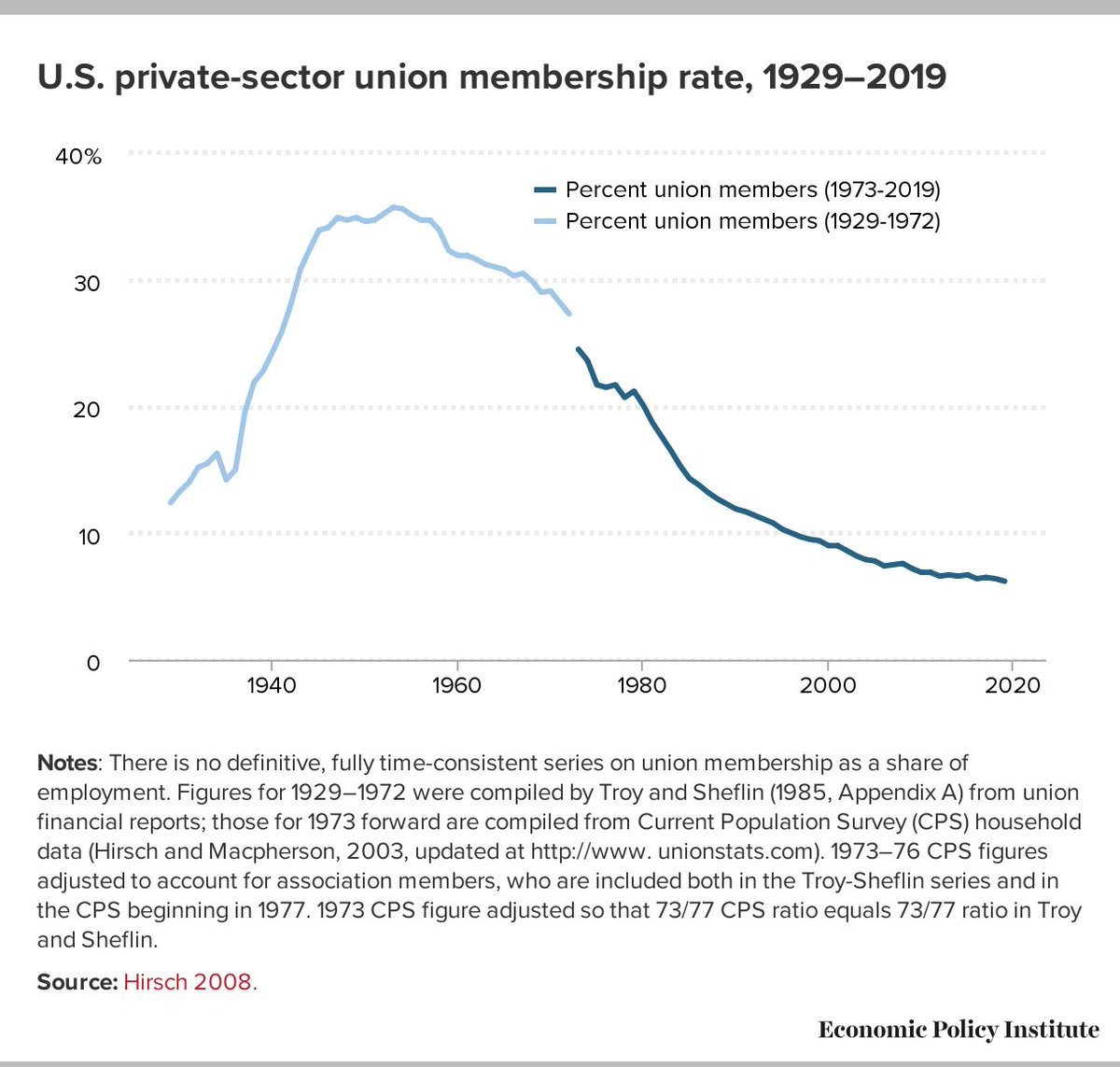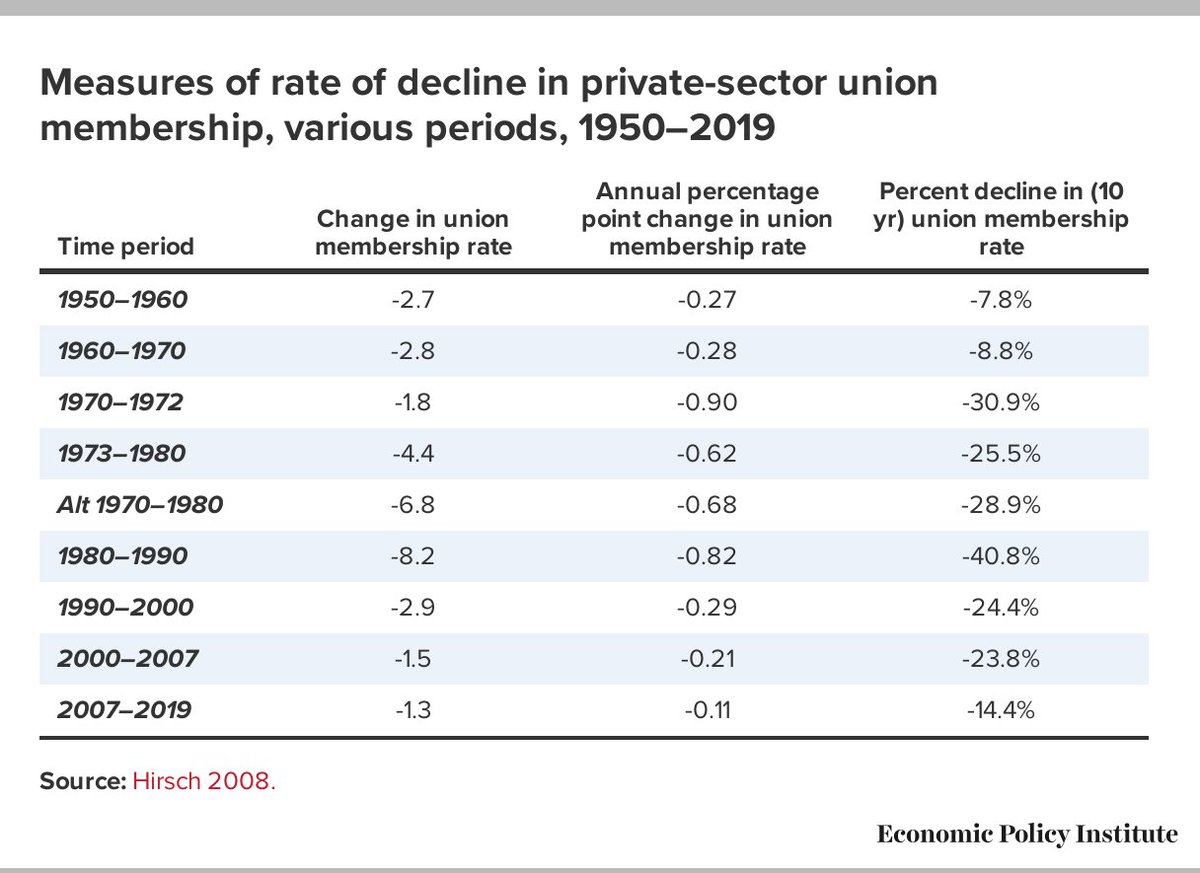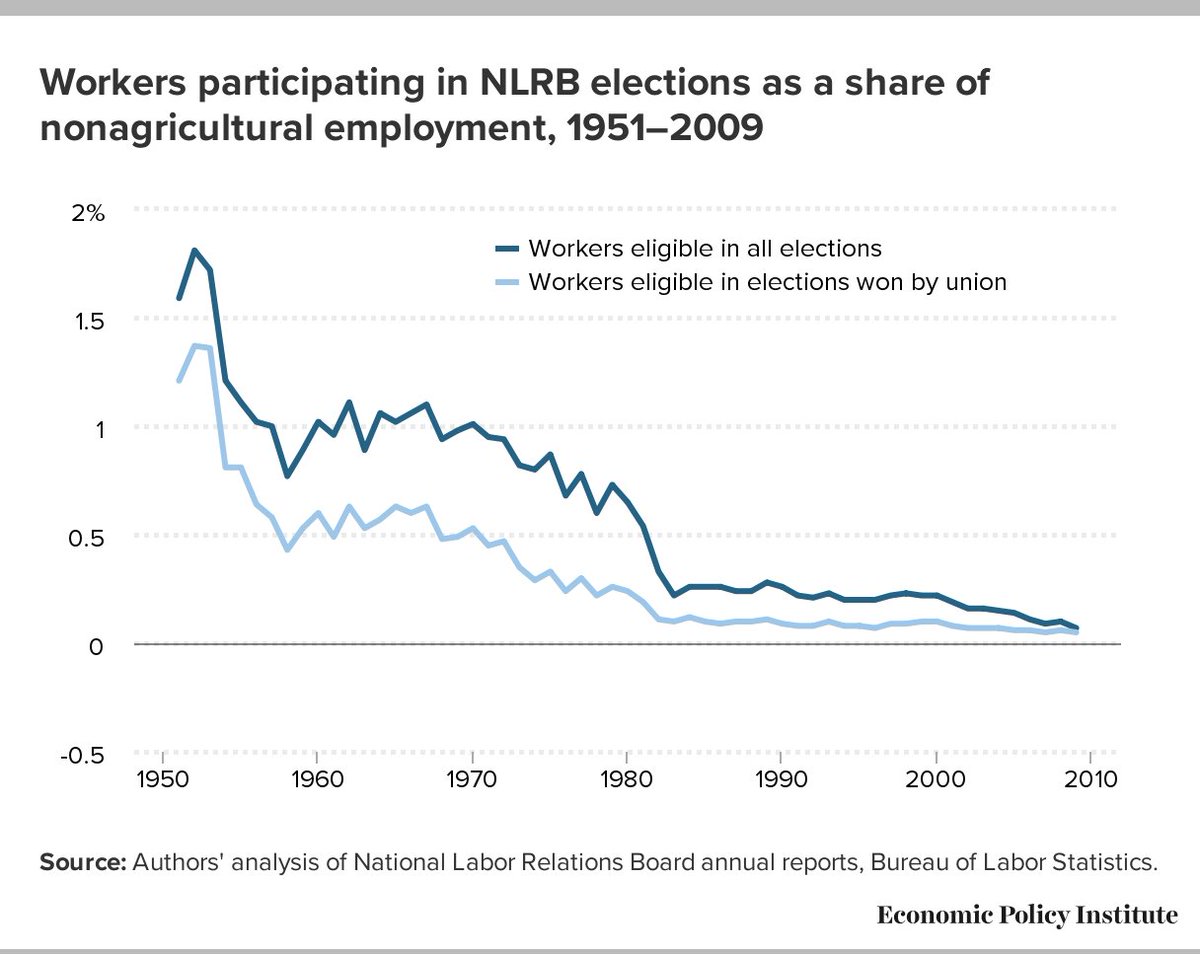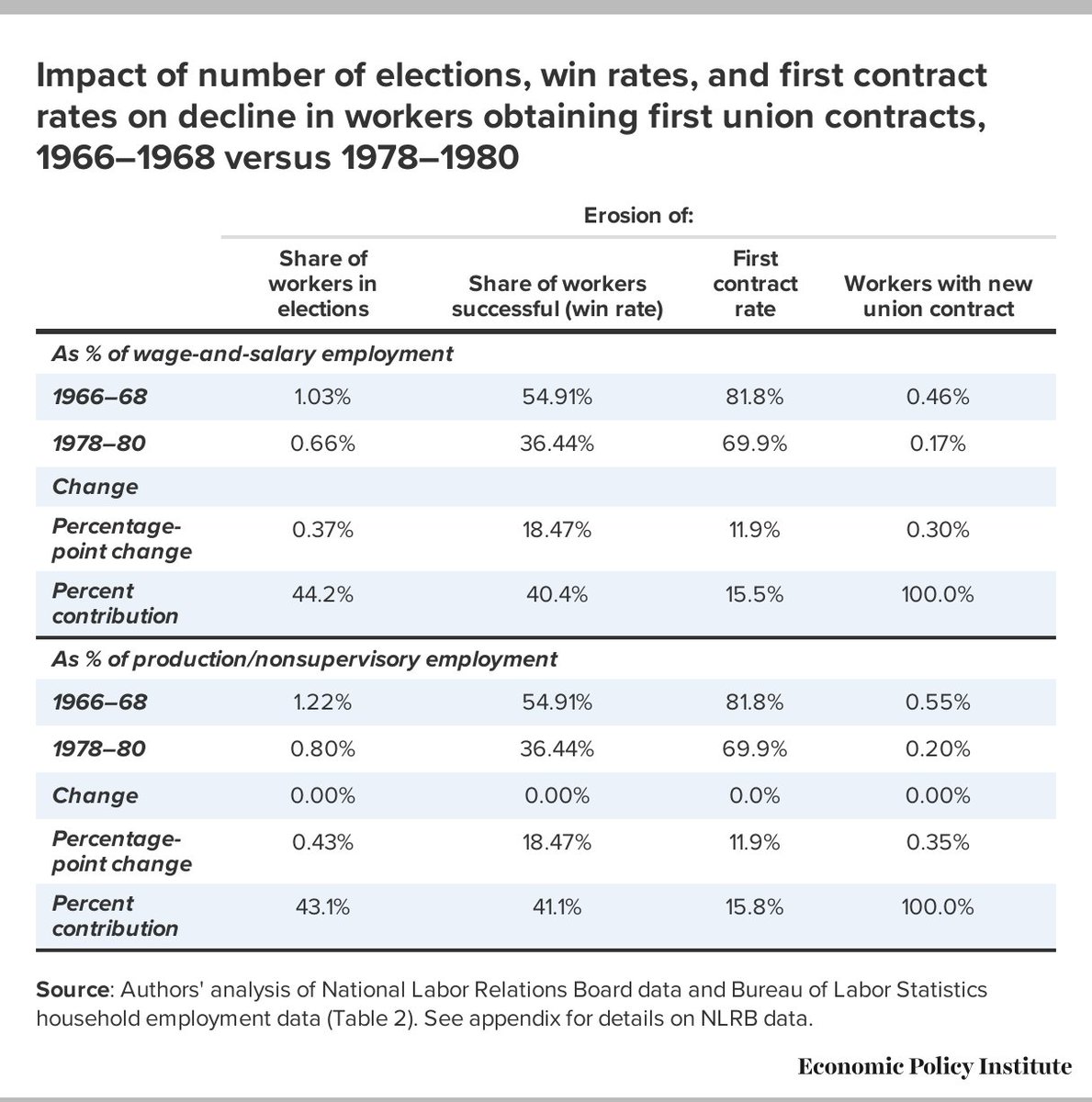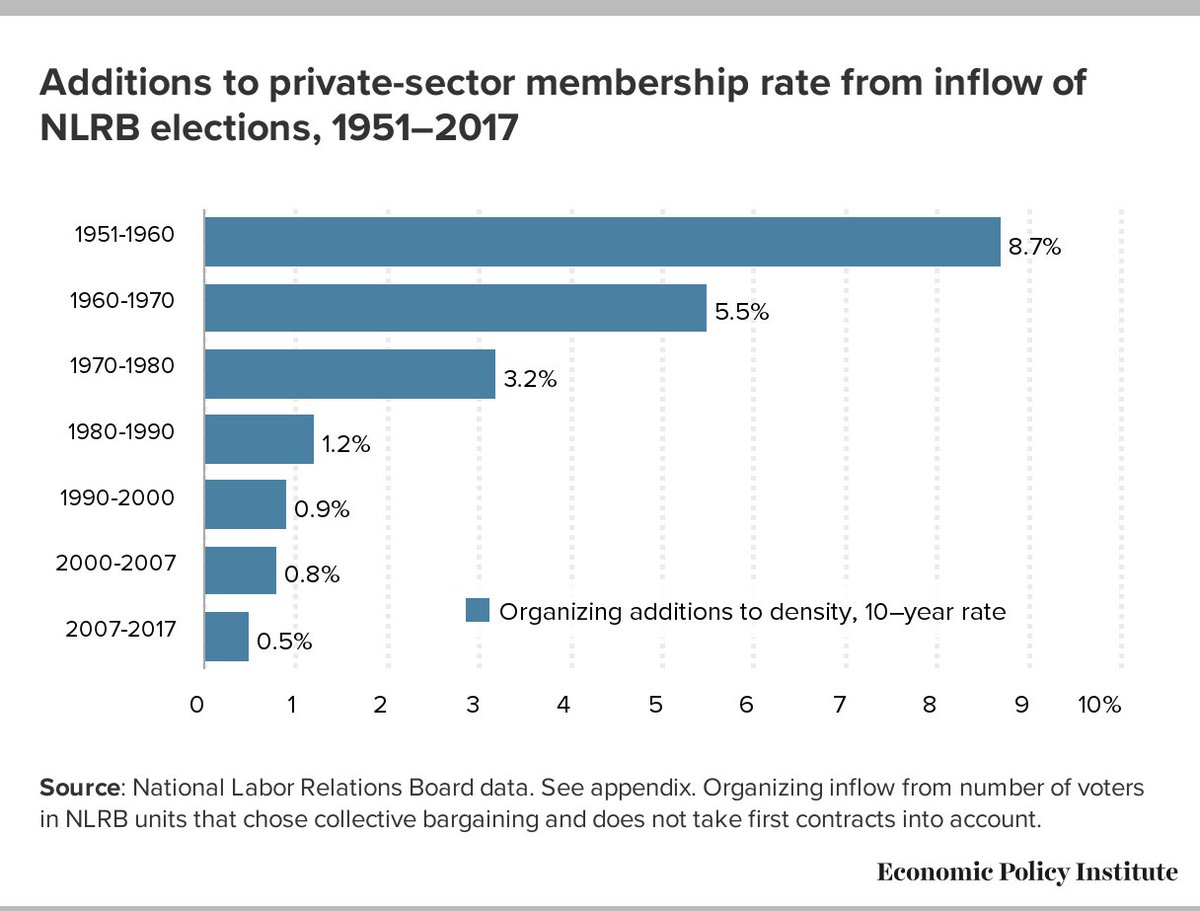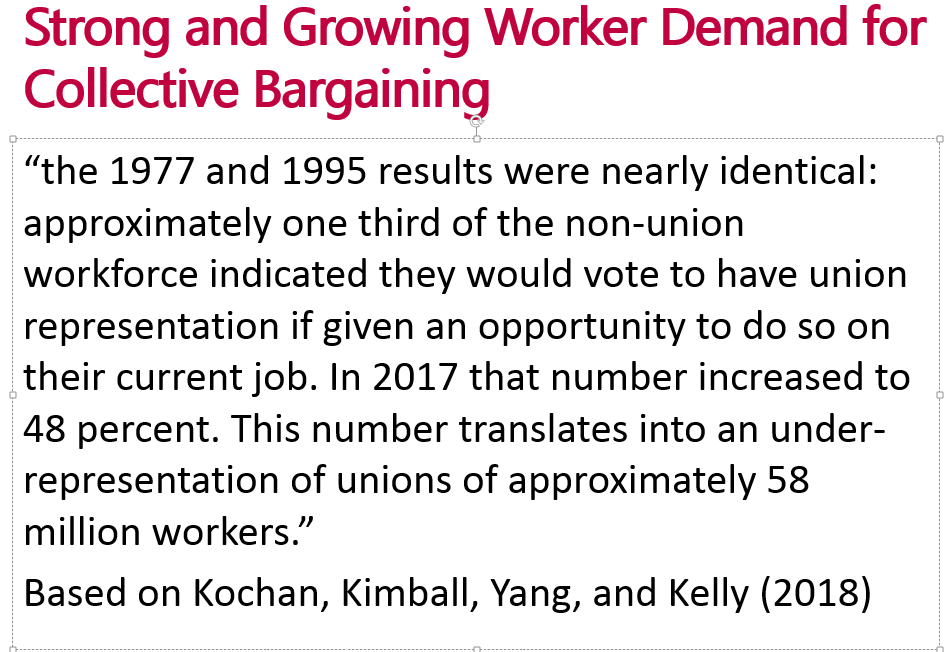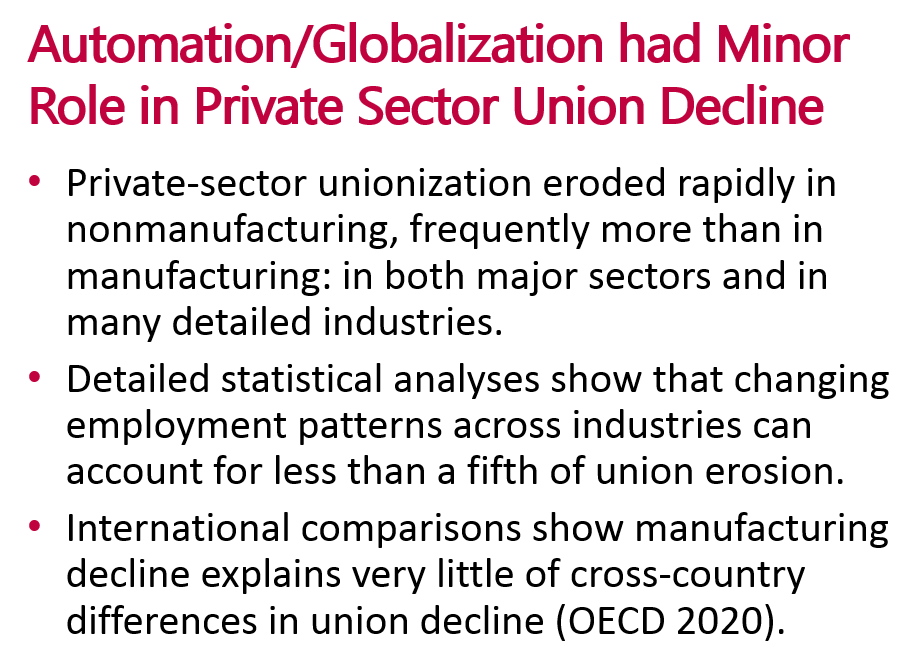Thread (1/14) on new paper explaining pvt sector union decline w/ @LaneWindham and Lynn Rhinehart. Retweet don't just like! @EconomicPolicy @GeorgetownKILWP https://www.epi.org/unequalpower/publications/private-sector-unions-corporate-legal-erosion/
(2/14)Bottom line, weaknesses in labor law (such as basically no penalties), exploited by employers (legally and illegally) that crushed ability to obtain a union, starting over 1970s,in 1980s & to this day! It wasn't lack of worker interest or simply automation/globalization
(3/14) See event on December 17th, Rebuilding Collective Bargaining Back Better https://www.epi.org/event/rebuilding-collective-bargaining-back-better/
(4/14)Here's some of the newly developed data analysis. First, the historical series of pvt sector union density decline. Key is noting steep decline in 1970s and 1980s.
(5/14)Steep decline shown by examining the rate of decline in pvt union density in 1970s and 1980s, as share of beginning-of-decade density. Not a steady decline!
(6/14)Developed data from NLRA reports to show number of workers in NLRB elections and number in units choosing collective bargaining. Key period is late 60's to early 1980s. Trickle inflow to unionism after that.
(7/14) In 50s & 60s more than 1% of employed were in NLRB election each year. In 70s that fell to 0.78%, in 80s to 0.29%. While 0.46% of the workforce able to become union in the 1966–1968 period, only 0.17% of workforce
able to do so by 1978–1980.
able to do so by 1978–1980.
(8/14) Union inflow reduction explained by harder to get elections (44%), harder to win (40.4%) and then harder to obtain a first contract (15.5%). Sums to 100% (sorta). This meant 200,000 fewer new union members each year by end of 70's. That's a lot.
(9/14) See discussion in paper of aggressive management opposition, such as the firing of union activists, illegal; increased use of anti-union consultants; the weaponization of shutdown threats; and delaying tactics. All perfected in 70's, taught by business schools, too.
(10/14) So, while the NLRB election process enabled an addition to union density of 8.7 ppts in 1950s, this was reduced to 1.2 ppt in 1980s, and even less recently. Doesn't take not getting 1st contract into account, so understated!
(11/14)Union decline therefore greatly affected by inability to add new union members/density. There's also a story of it being harder for established bargaining units to sustain themselves, much because of anti-union corporate animus and weak law.
(12/14)See discussion in papers of ways changes in law (court interpretations) undercut not just organizing but also bargaining power
(13/14) It wasn't because there was a diminished interest of workers in collective bargaining. In this period there at least a third of nonunion workforce wanting a union and recently nearly half. big unmet demand for collective bargaining, 58 million workers!

 Read on Twitter
Read on Twitter